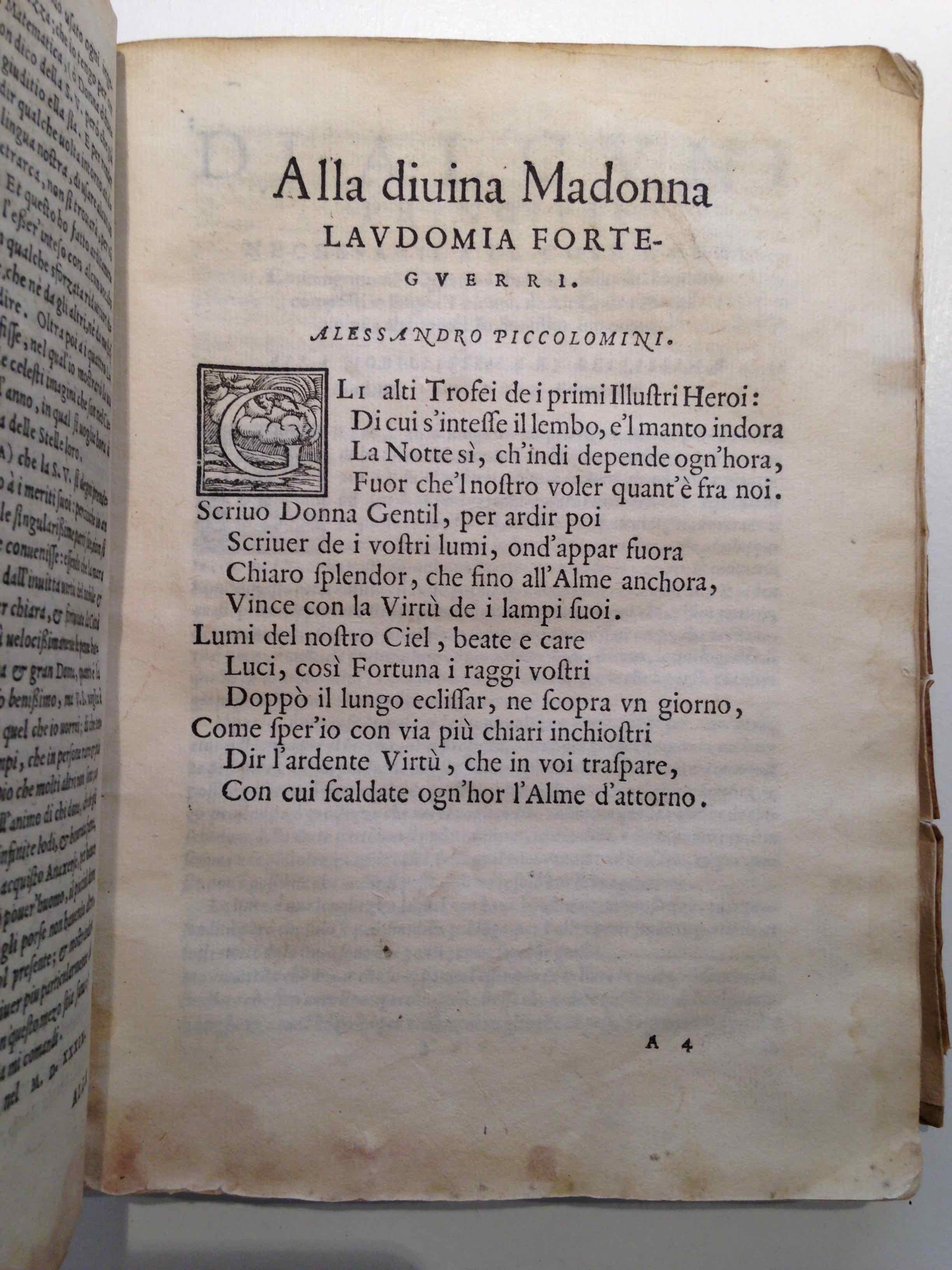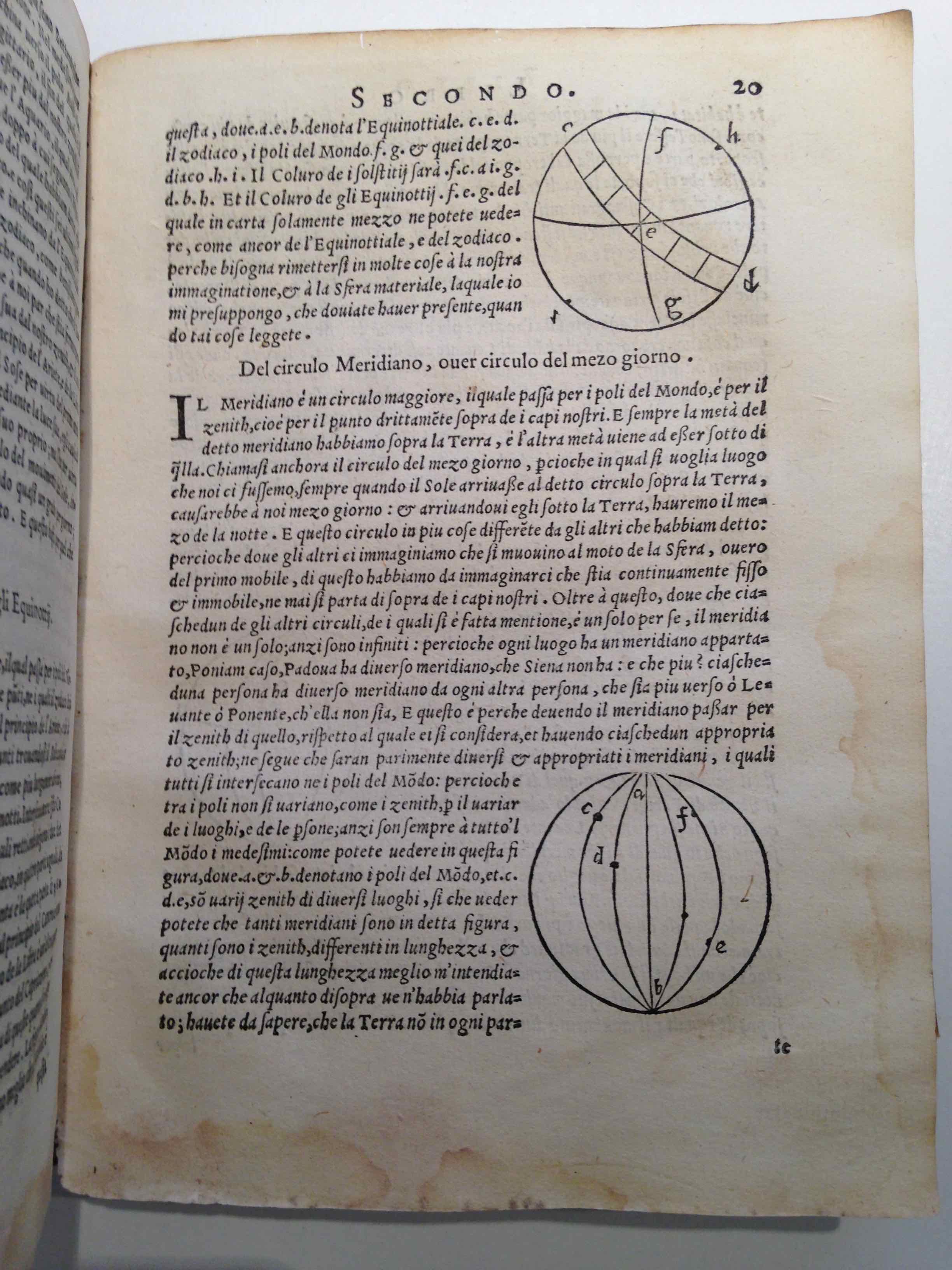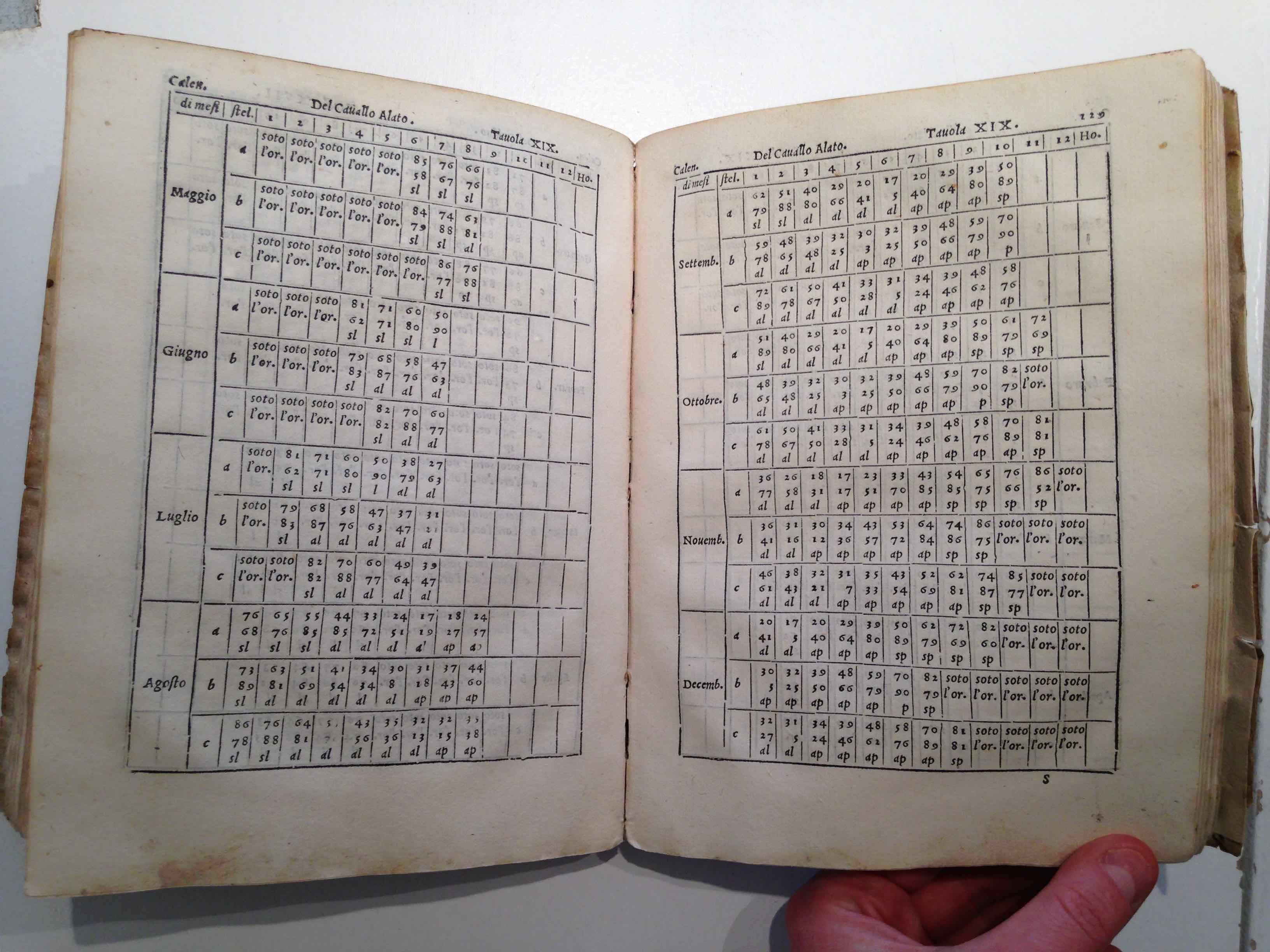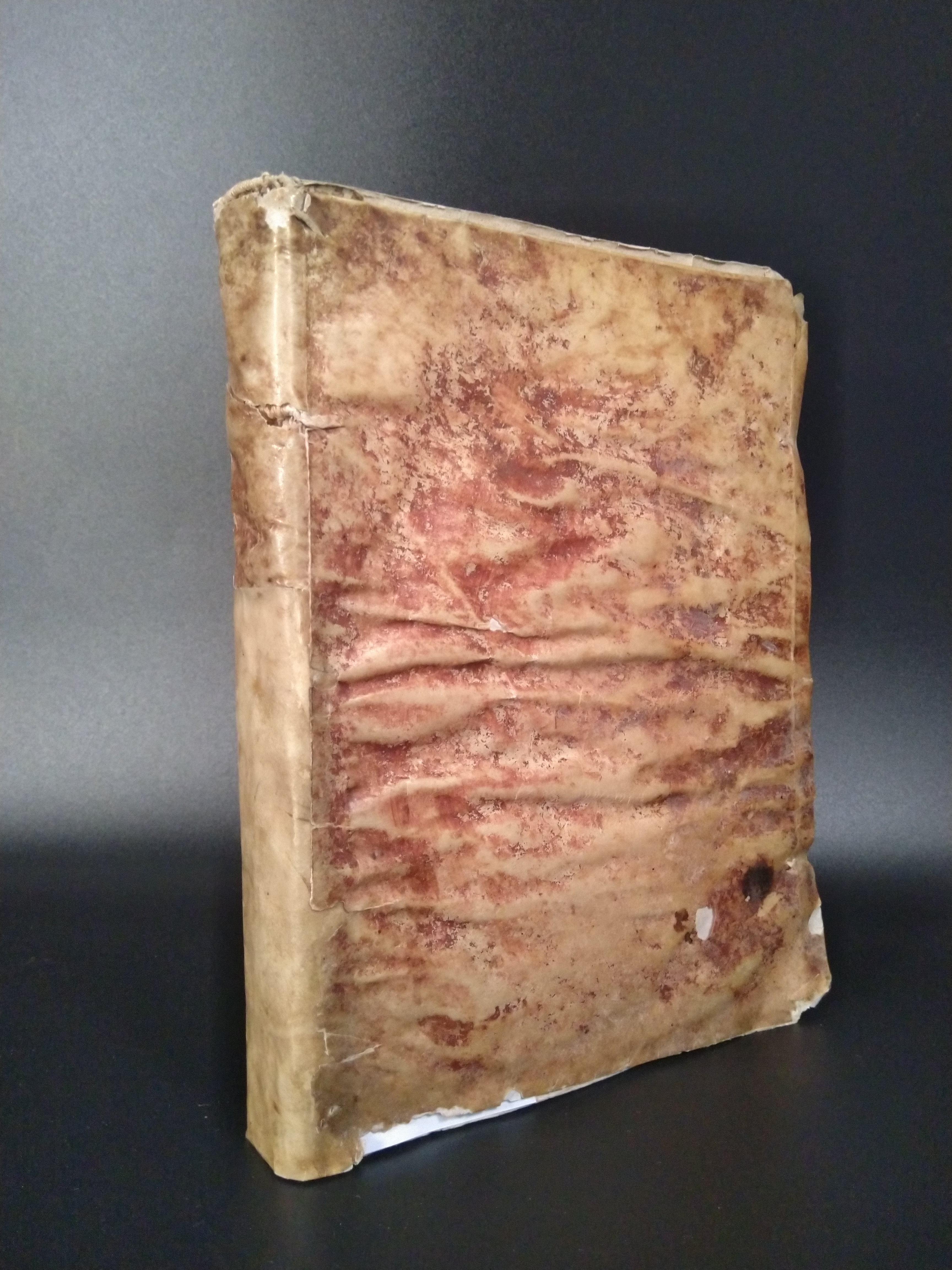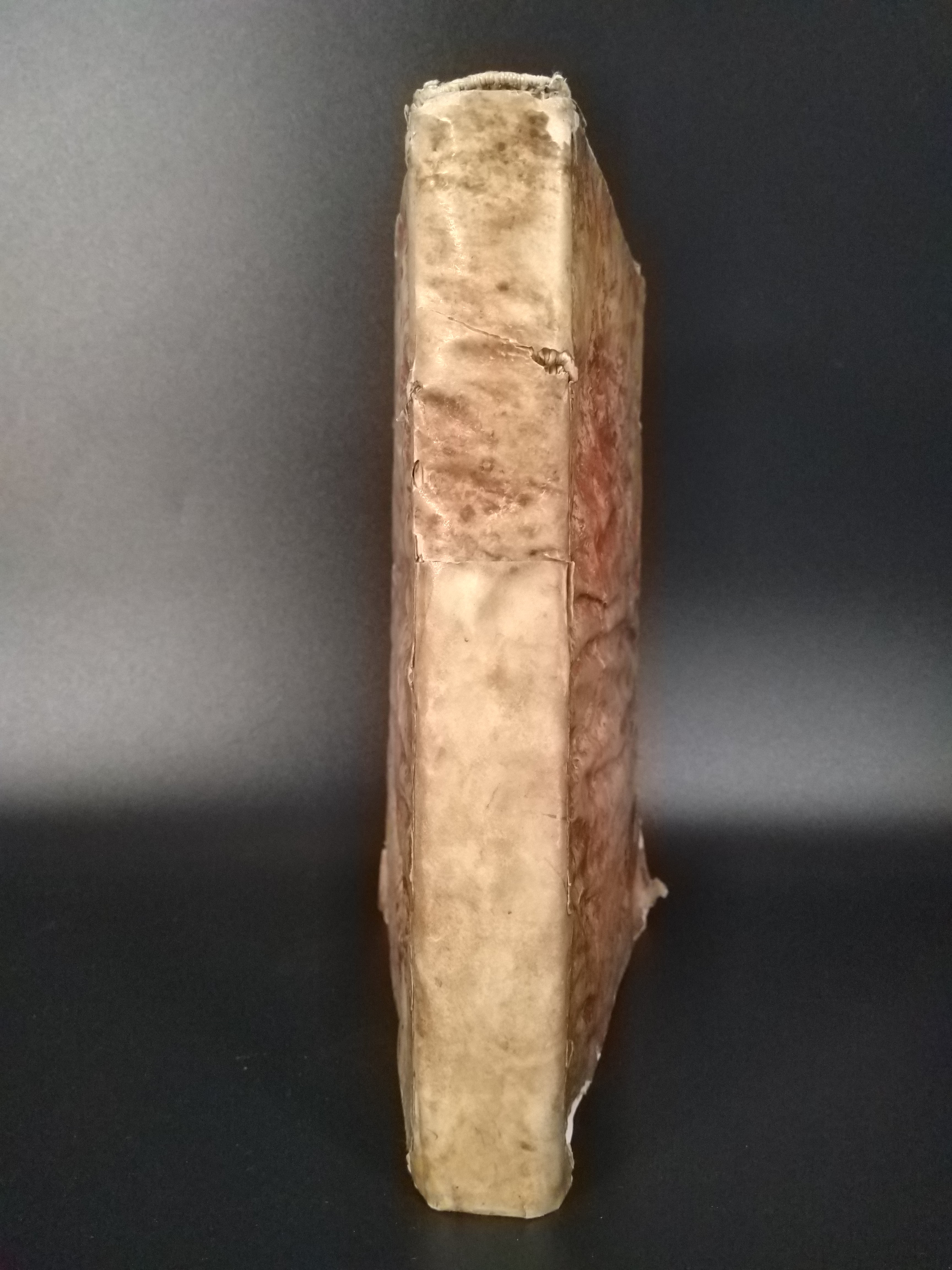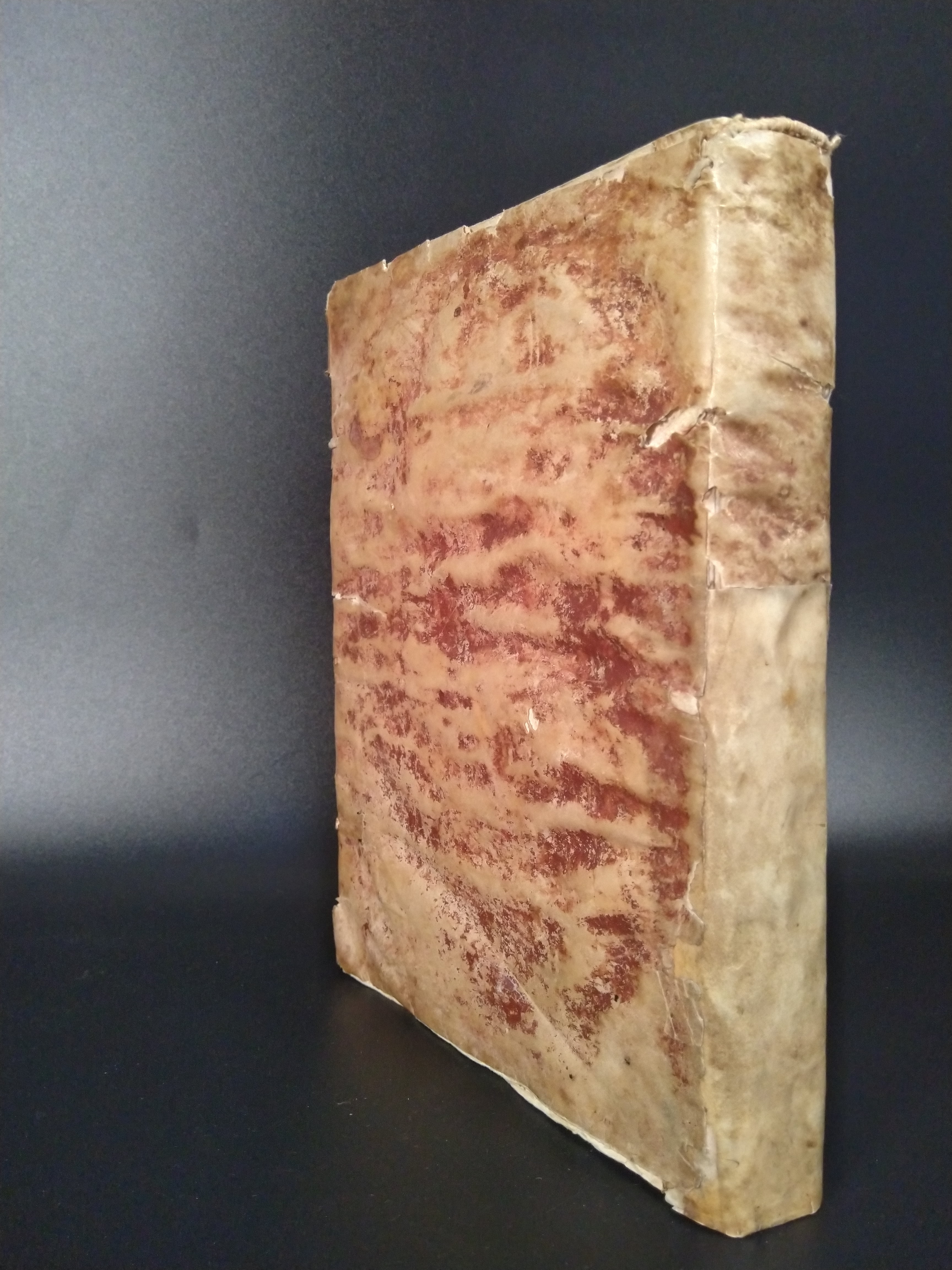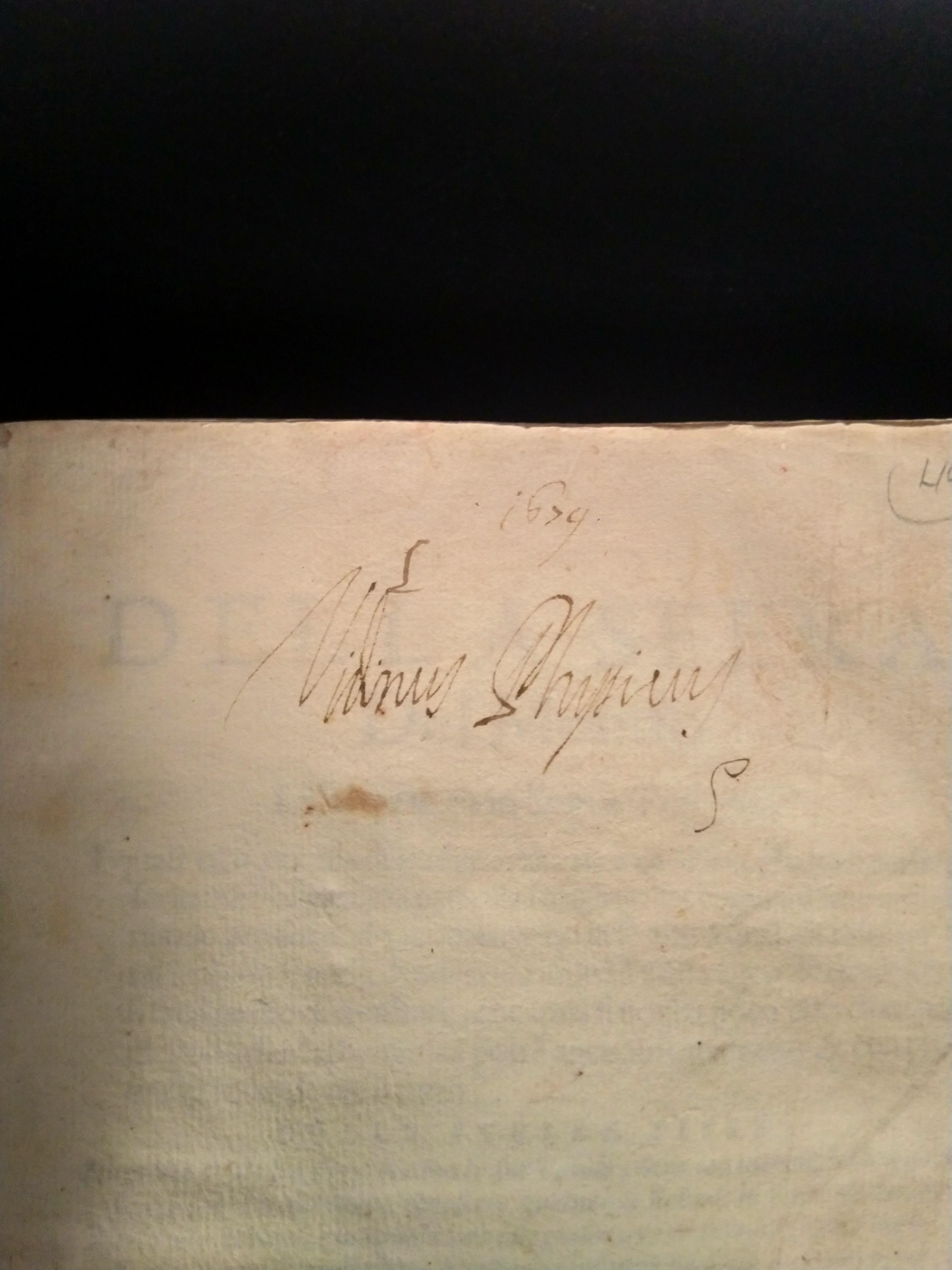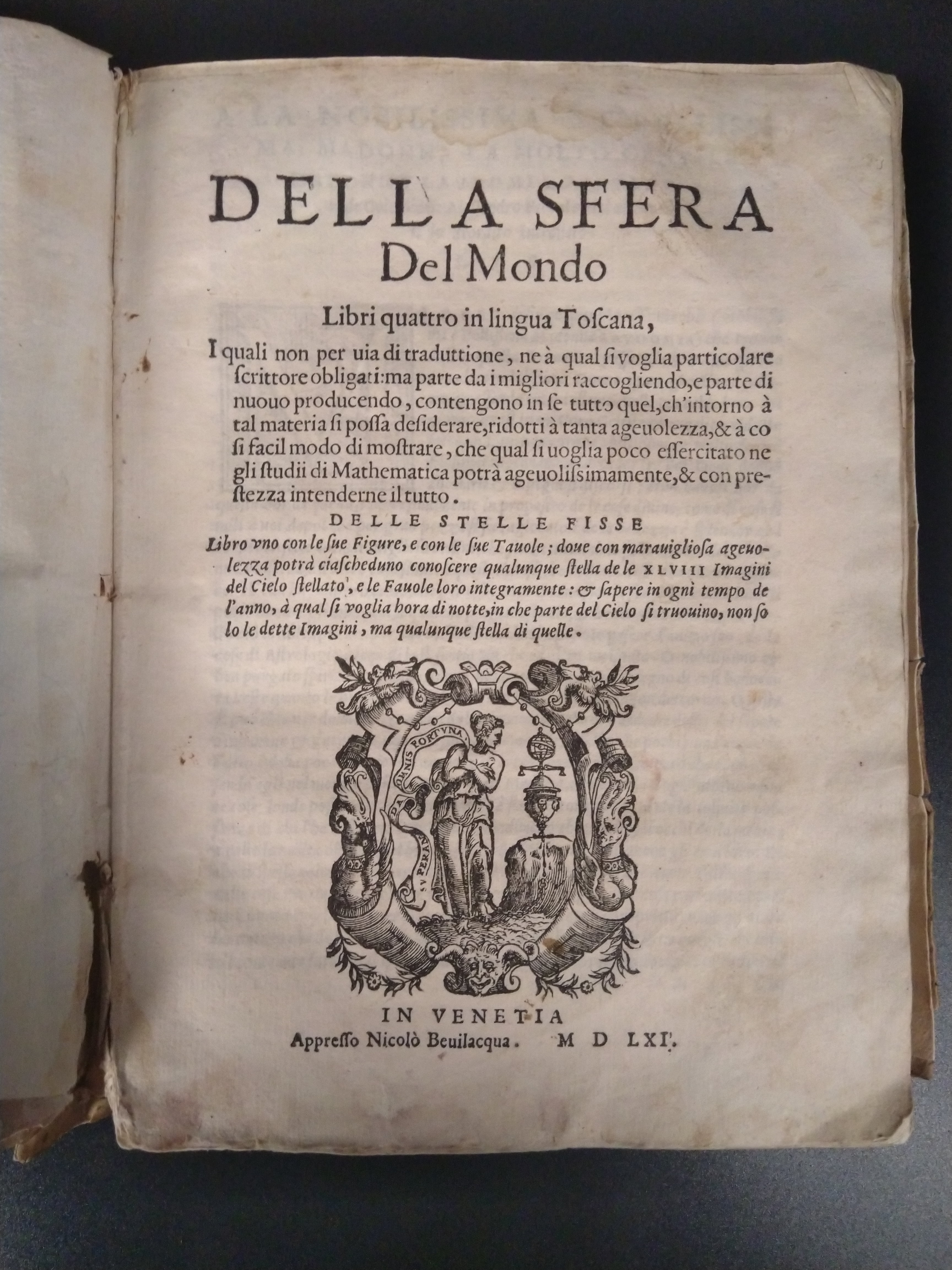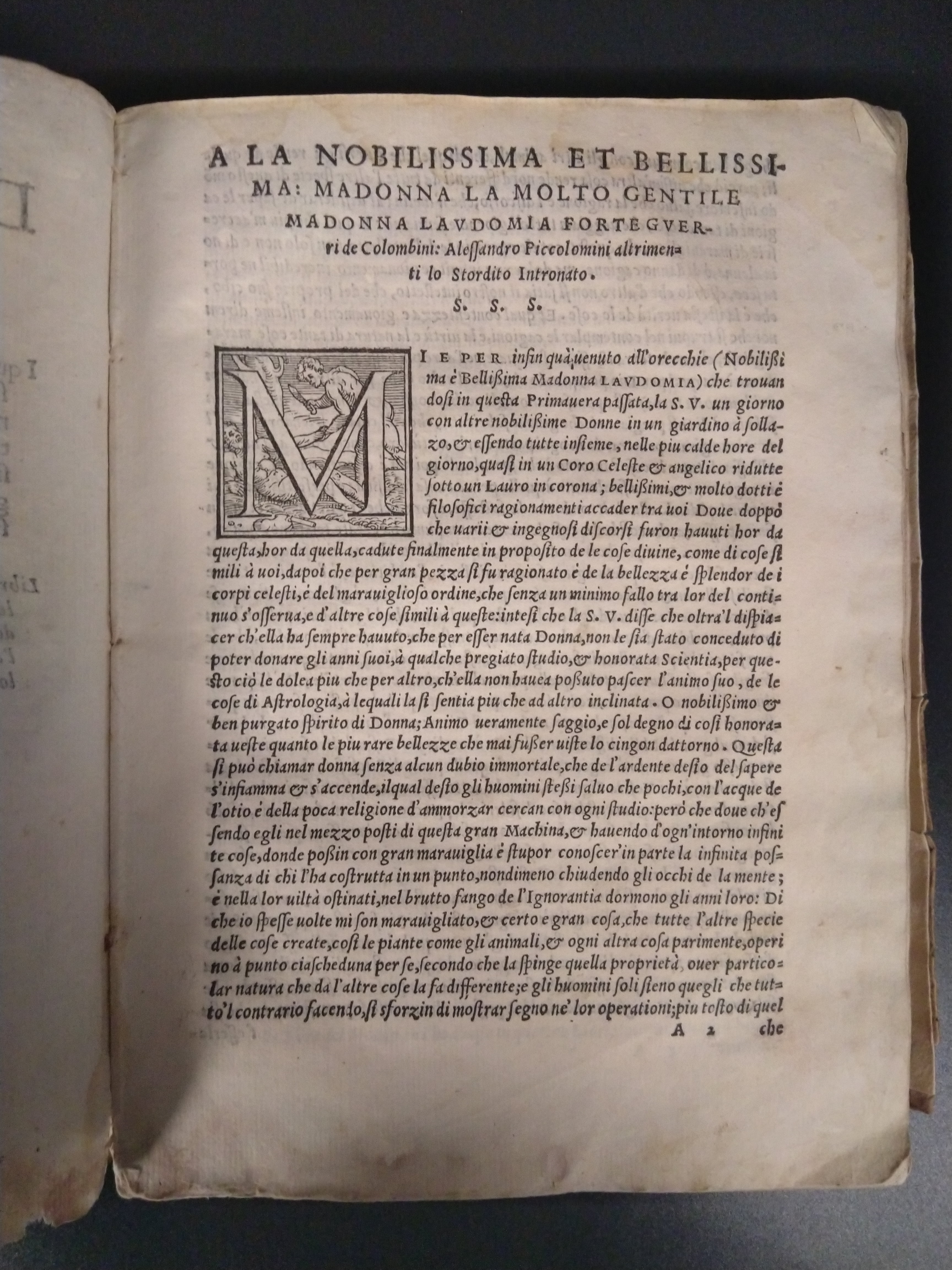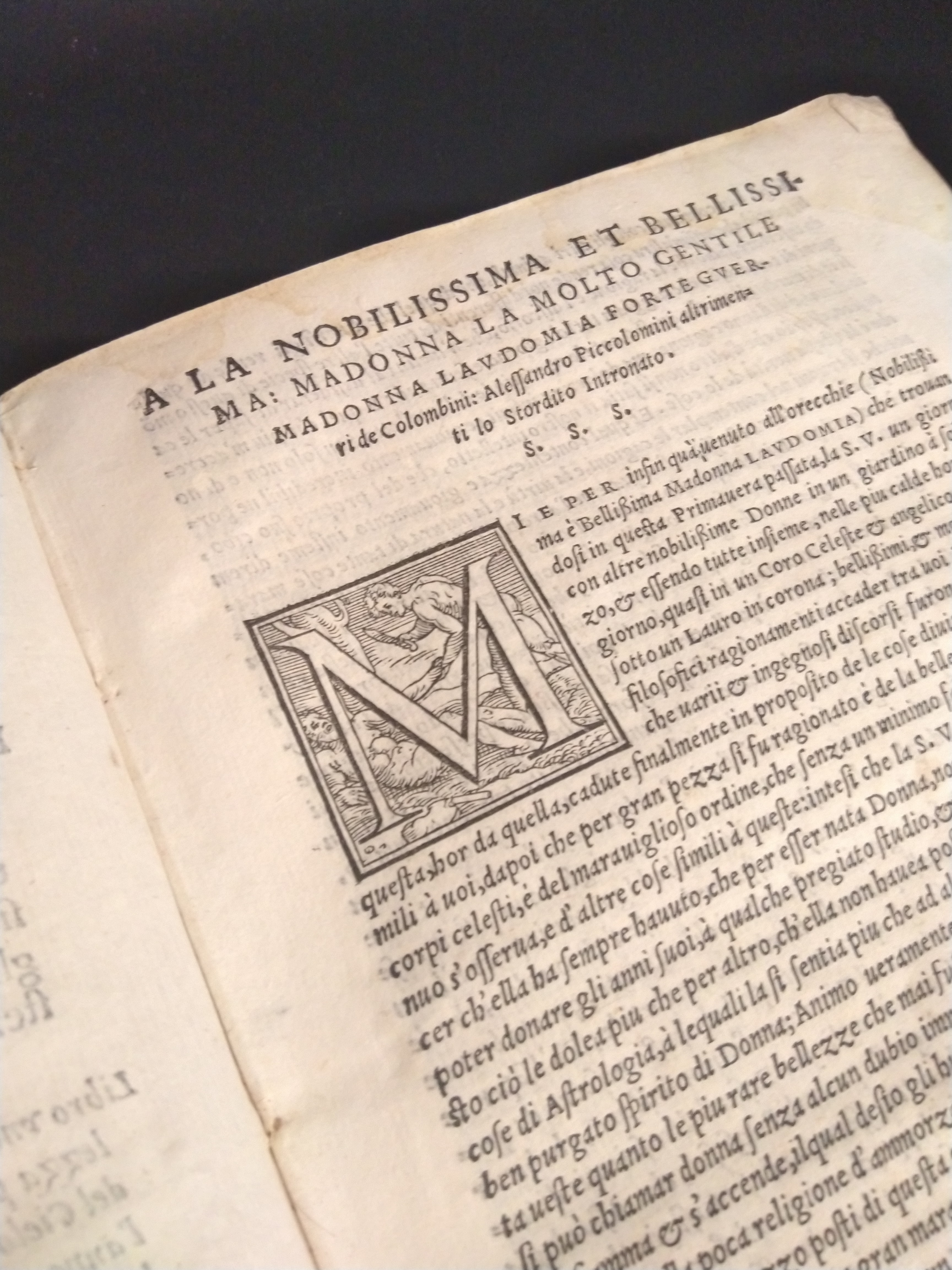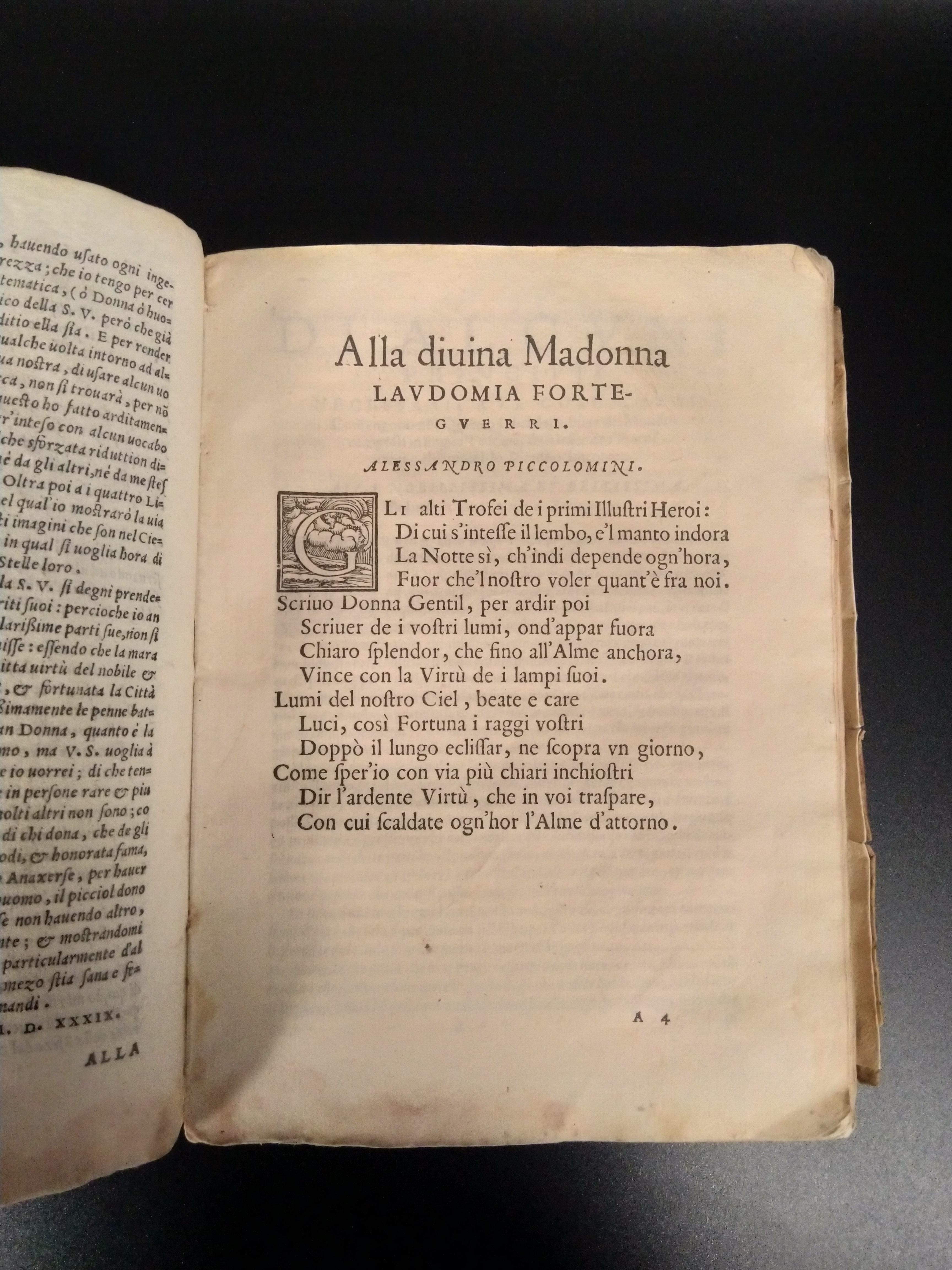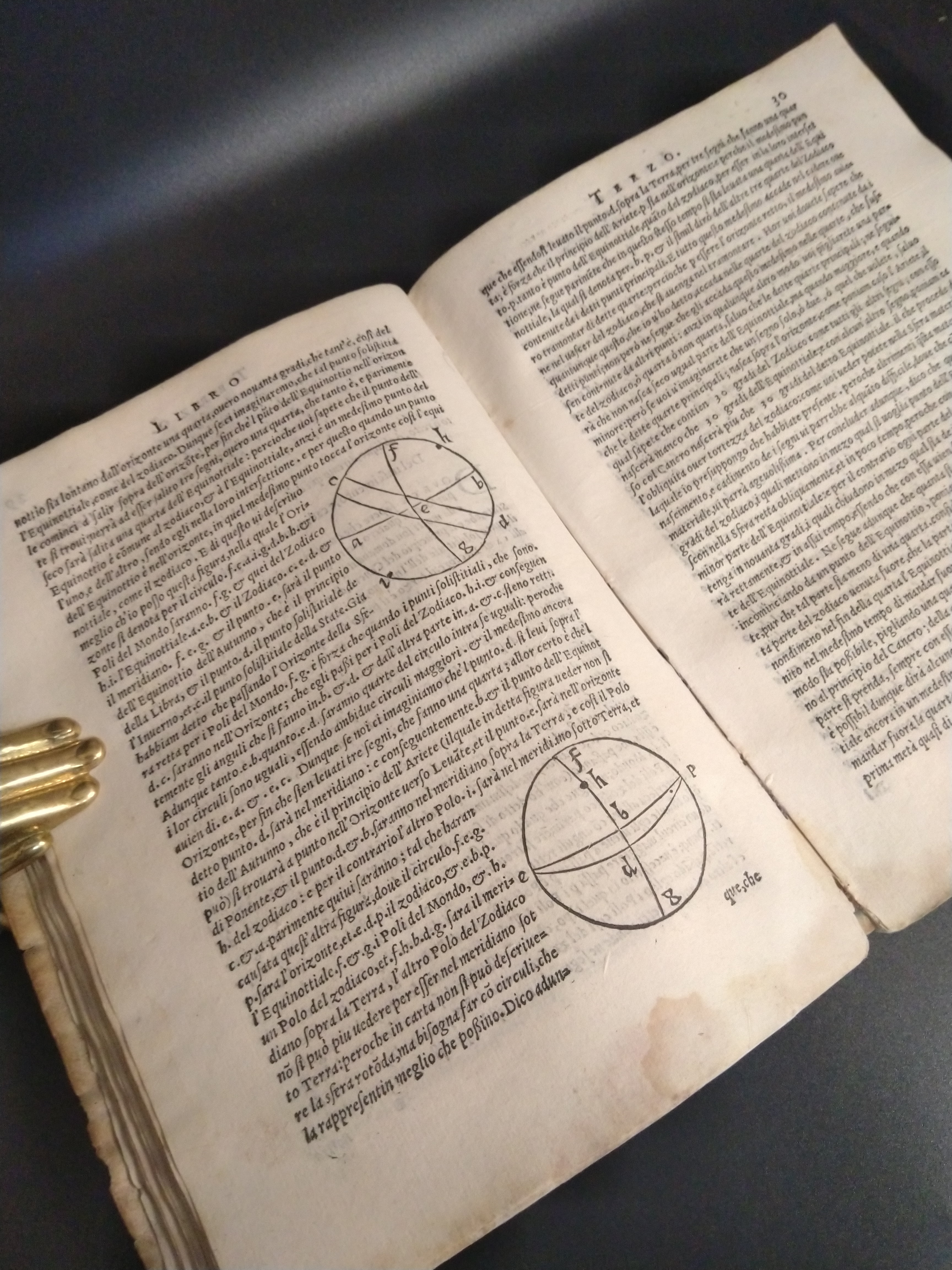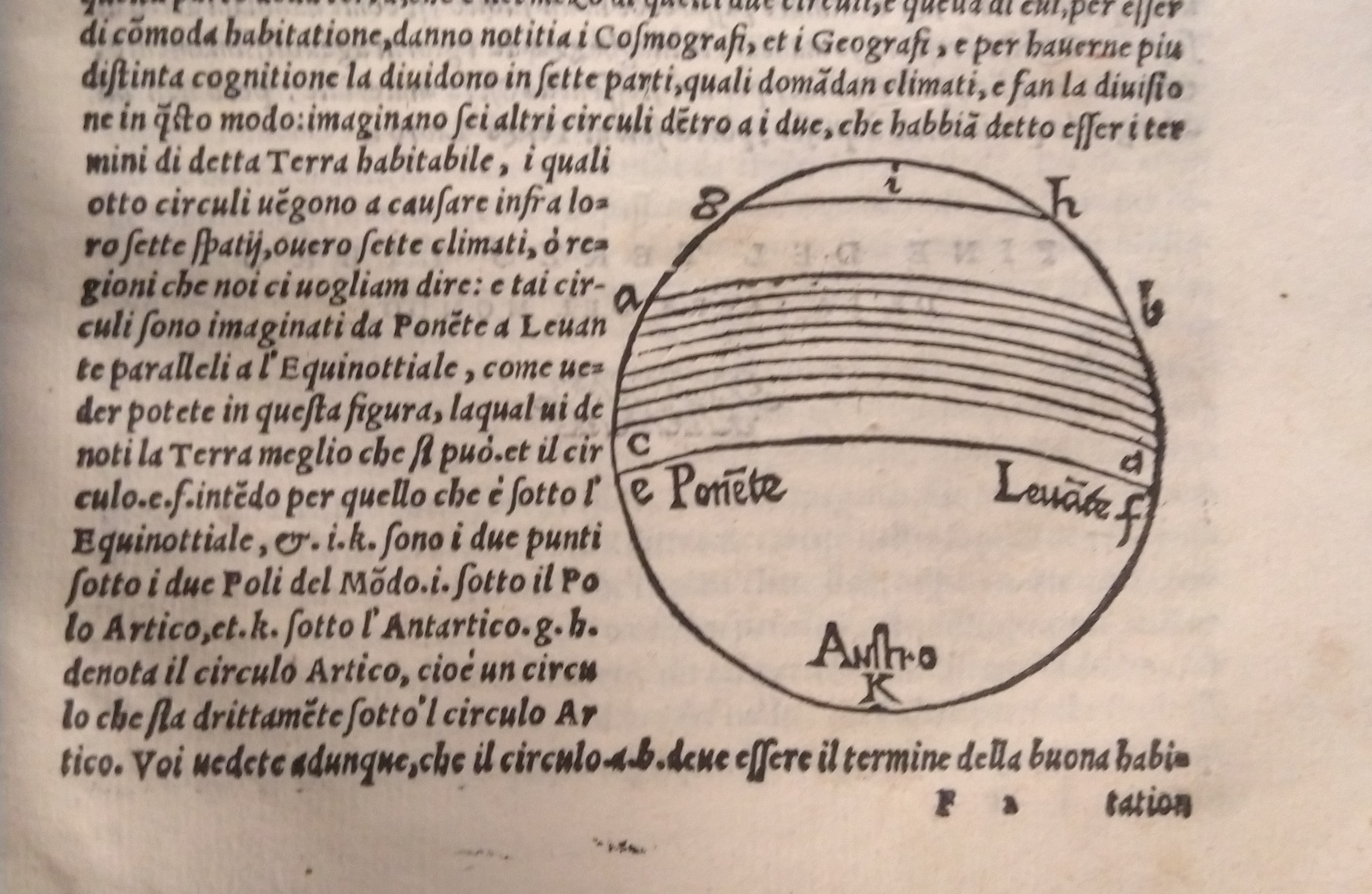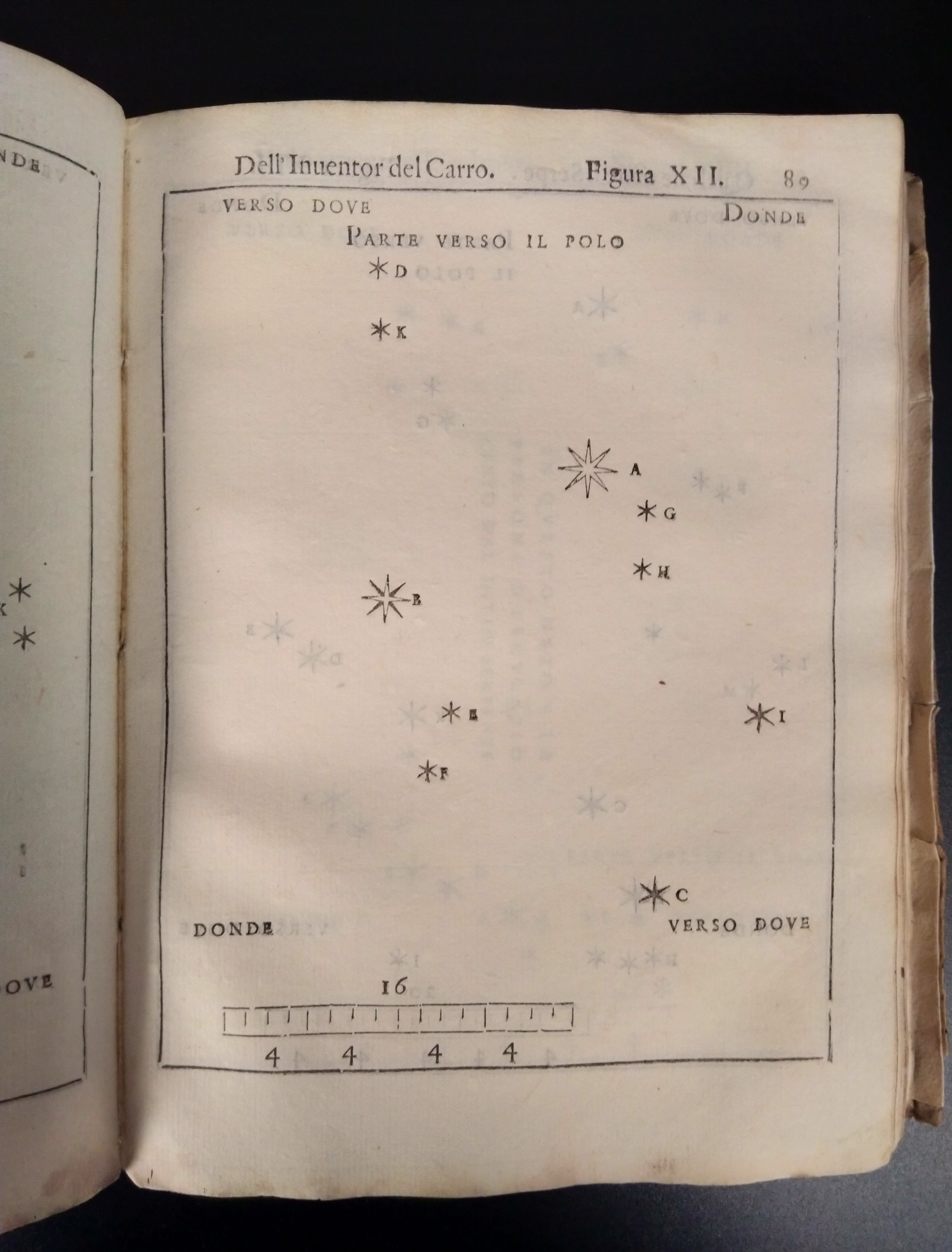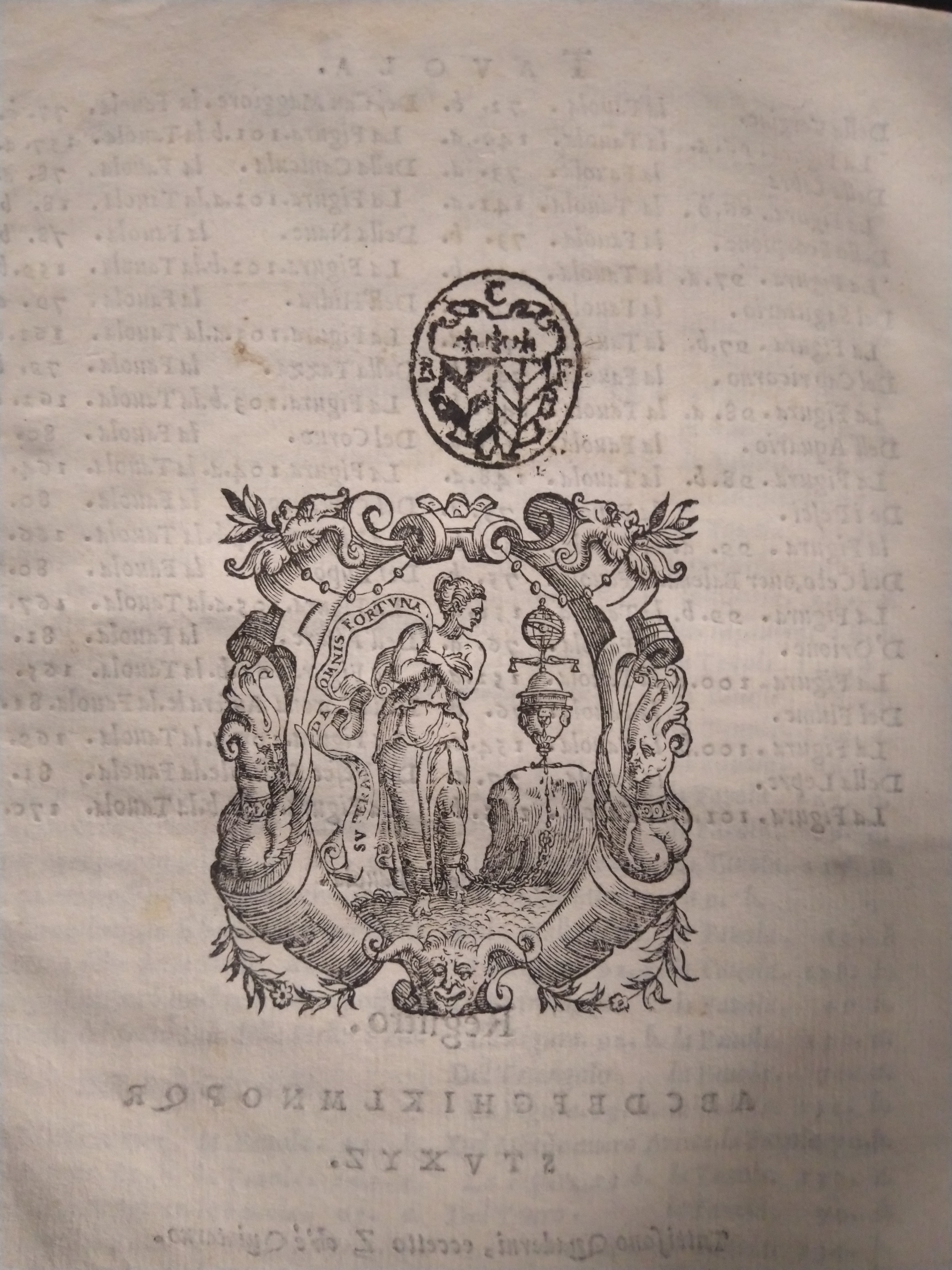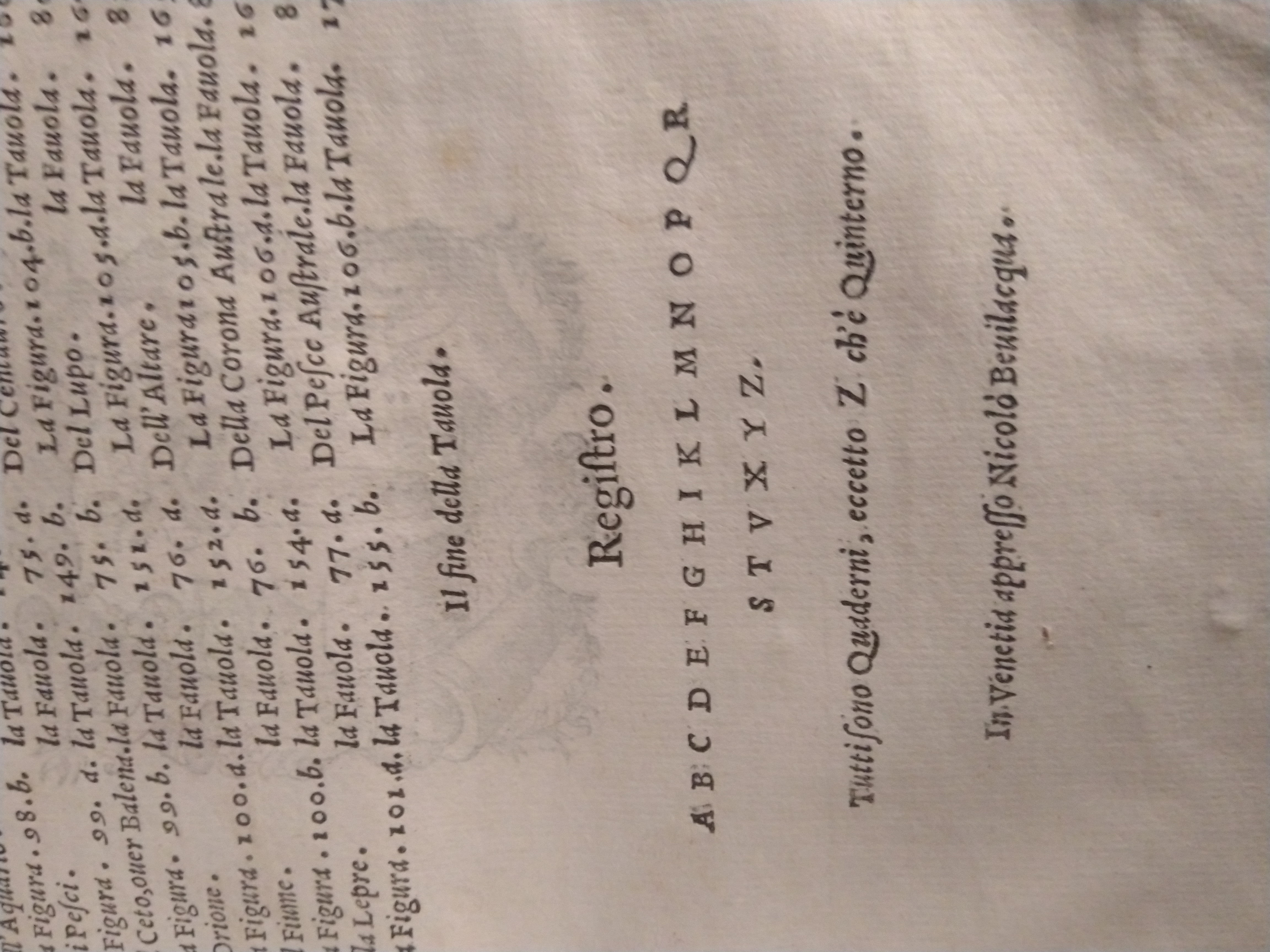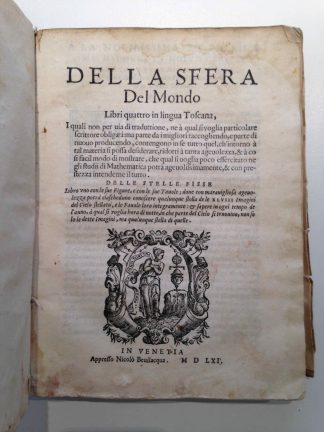PICCOLOMINI, Alessandro
Della sfera del mondo... Delle stelle fisse
Venice, Nicolò Bevilacqua, 1561£2,500.00
4to, ff. [4], 176, [4]. Italic letter; historiated initials, printer’s device on both titles, 47 full-page stellar maps (misnumbered 48, but skipping, as usual, no. 24), woodcut astronomical illustrations in text, 48 double-page astrological tables; damp stains to upper (slight) and lower margins of first gatherings, small marginal oil splashes to final leaves, two tiny ink spots just affecting text of f. 63 r; clean tear to margin of f. Aviii, tail of first gathering slightly worn. A good copy in contemporary limp vellum (formerly painted red), partially rebacked and worn; minor loss to covers; contemporary paper pagemarks applied to outer margin of each chapter; owner’s inscriptions on front pastedown ‘L. Vidinus Physicus S.’ ‘1679’; contemporary ms on verso of rear endpaper ‘Bronzo Philippo Franz’; early Italian armorial ink stamp with initials CRF to verso of final leaf.
Sixth edition of this very influential Italian cosmography paired with a much important illustration of the Ptolemaic constellations, originally published together in 1540. The same years as this edition, another more common reprint by Varisco appeared in Venice. The scion of a papal family in Siena, Alessandro Piccolomini (1508-1578) was a leading Renaissance humanist, philosopher, dramatist and astronomer. He was a founding member of many Italian academies, notably the Intronati and Infiammati. After teaching philosophy in Padua, he moved to Rome and Siena to started an ecclesiastical career, which eventually led him to being appointed archbishop of Patras.
A partisan of the Italian vernacular, he intentionally avoided Latin in his numerous works. These comprise a couple of moral comedies and collections of his letters and sonnets, several philosophical treatises and translations of classical authors, as well as his famous astronomical essays. Among them, La Sfera and Le Stelle fisse stand out for accuracy and success. The first describes the universe following the traditional Ptolemaic-Aristotelian geocentric cosmography, while the second contains the one of the earliest star atlases to be published in the Western World. All Ptolemy’s 48 constellations, save Equuleus, were displayed without the traditional depiction of the related animals. Piccolomini introduced here the practice of identification of stars by Latin letters, which would be adopted using the Greek alphabet by Johann Bayer some seventy years later. The lunar crater Piccolomini is named after him.
Rare. Only two copies recorded in the US (Harvard and Pittsburg). Not in Adam, BM STC It. or Riccardi. Cantamessa, 3459; Graesse, V, 281; Houzeau-Lancaster, 2491.In stock



